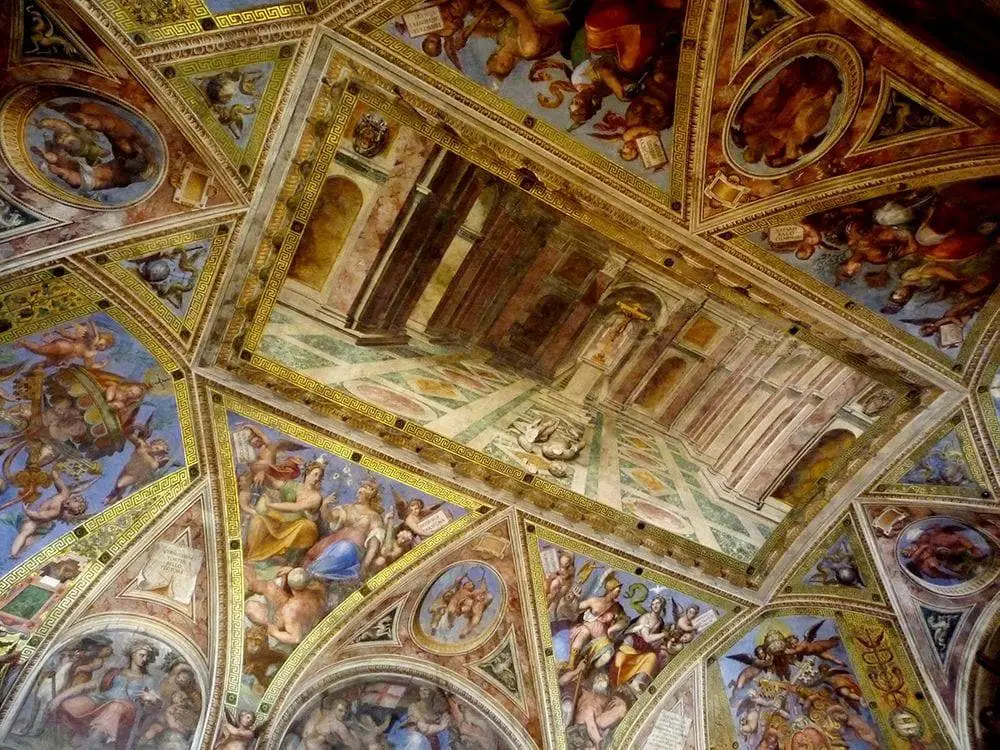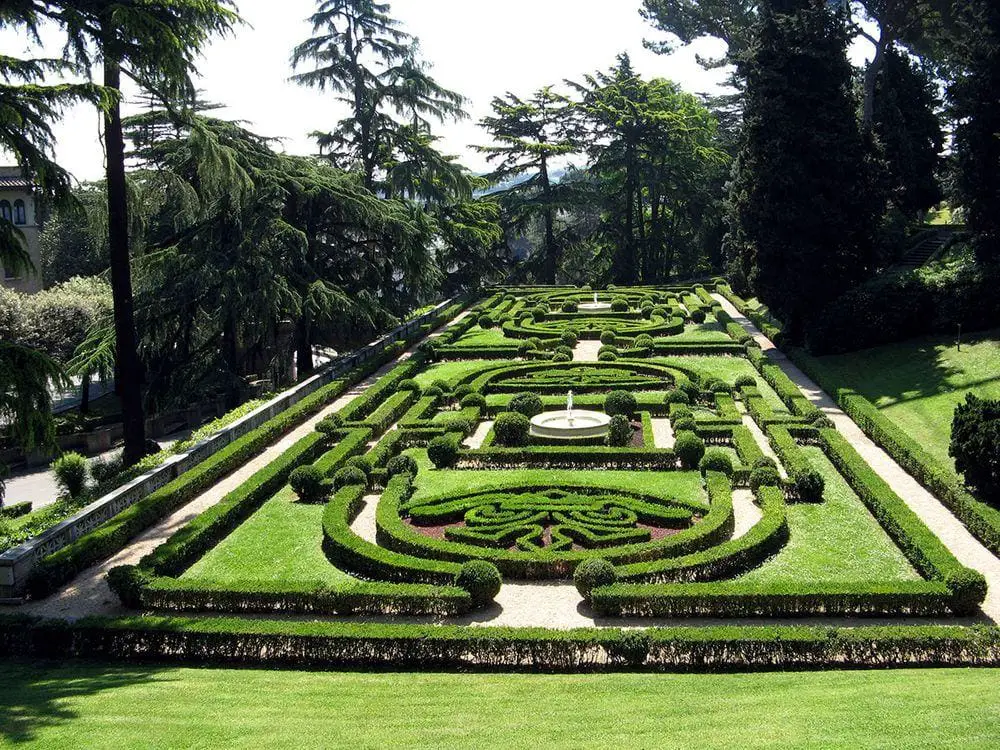Wondermondo 🢖 World 🢖 Wonders of Europe 🢖 Wonders of the Vatican City
Territory
Wonders of the Vatican City
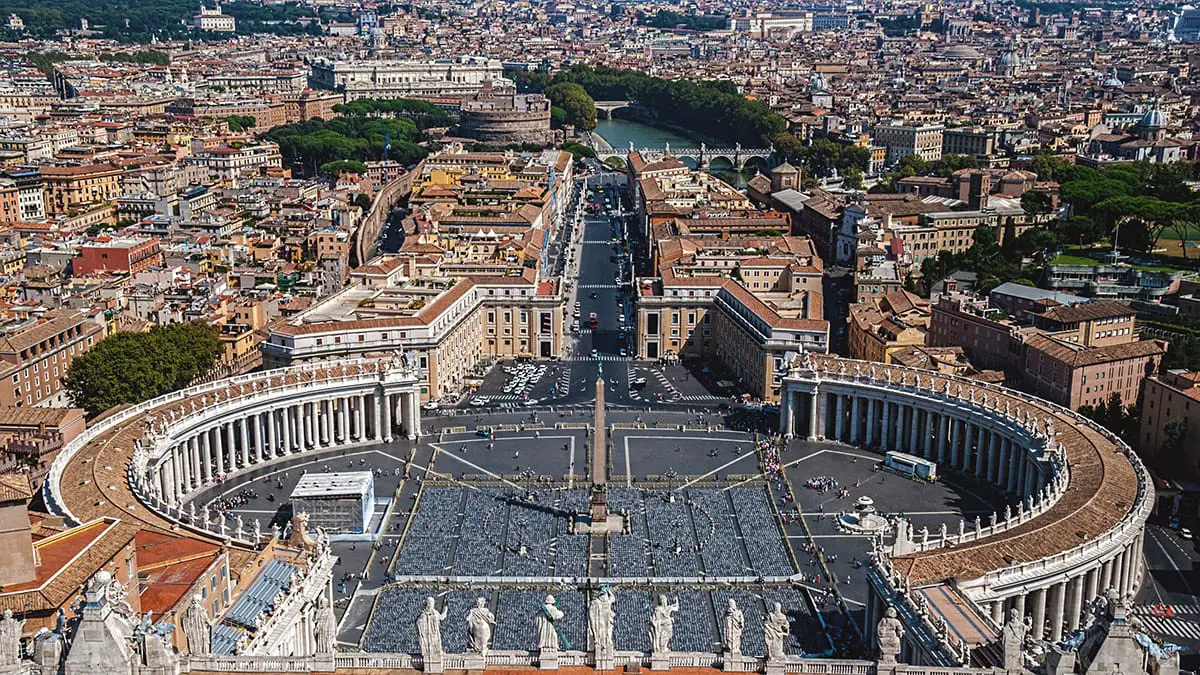
 Highlights
Highlights
Vatican is a religious center of global importance and in spite of its minuscule size here are located several landmarks of world importance. In fact, these landmarks cover… a major part of this country.
In the Vatican are located several of the world’s most important structures and artworks of Renaissance and also Baroque, such as the giant St. Peter’s Basilica and Sistine Chapel with its frescoes – some of the world’s best-known works of art.
Map with the described wonders
If you see this after your page is loaded completely, leafletJS files are missing.
 Top 15 wonders of the Vatican City
Top 15 wonders of the Vatican City
Archaeological wonders
Vatican Necropolis
Necropolis under St. Peter’s Basilica. Started as an open-air cemetery in the times of Roman Emperor Caligula. Here around 64 – 67 was buried Saint Peter as he was martyred in the nearby Circus of Nero. Around this site started the development of the Vatican – in the times of Emperor Constantine I there was started the construction of the first basilica over the tomb. The site contains numerous Roman mausoleums, including the Tomb of the Julii with beautiful mosaics from the late 3rd – early 4th century.
Architecture wonders
Sistine Chapel
In this chapel, the new pope is selected. Constructed in 1473 – 1481 and world-famous due to the frescoes made by such Renaissance artists as Sandro Botticelli, and Michelangelo. These frescoes are among the world’s highest achievements in art.
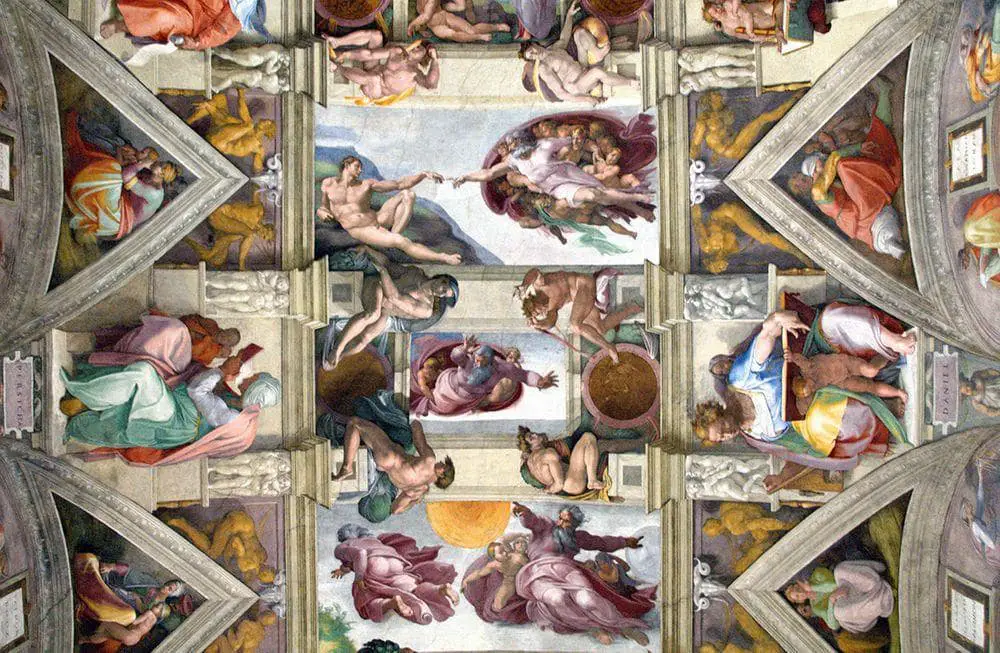
St. Peter’s Basilica
The most important church in Christian history, with the largest interior of any church. The present basilica was built in 1506 – 1626 and represents one of the most important pieces of Renaissance architecture. Contains the purported grave of Saint Peter.
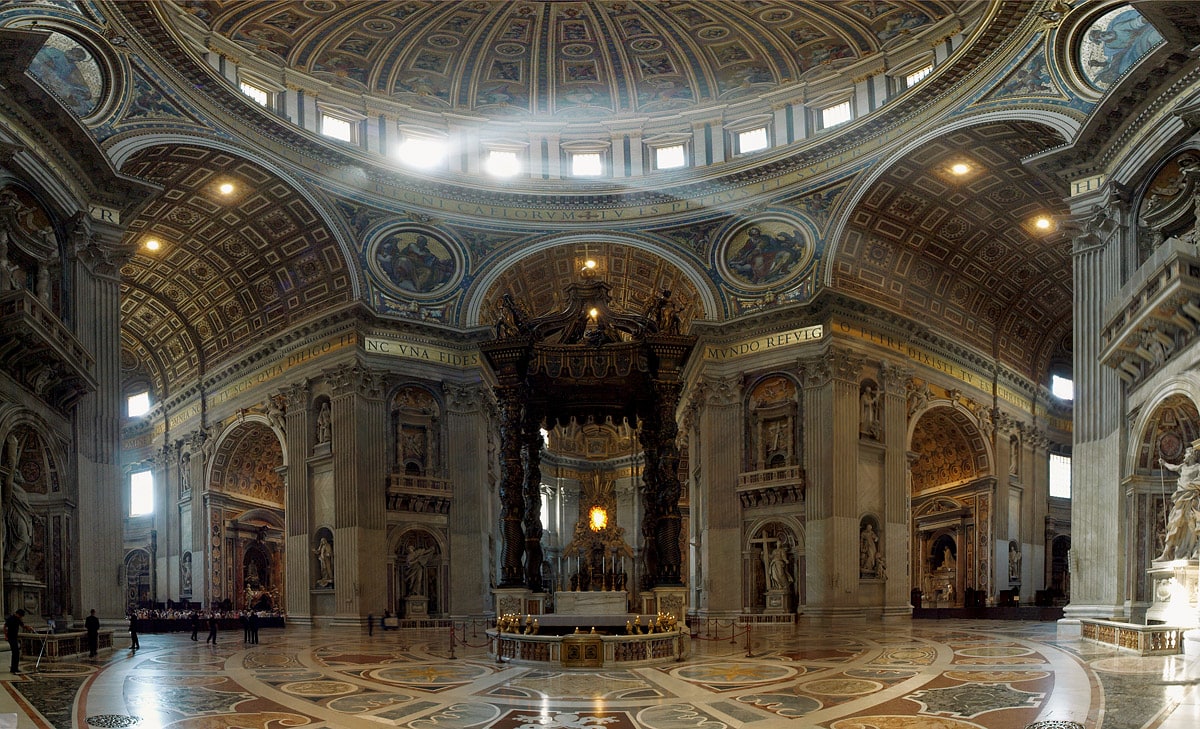
Vatican Museums
A group of museums, dispersed in the rooms of Apostolic Palace and Belvedere. Includes several museums of Christian art from around the world, including Gregoriano Etrusco Museum (one of the best collections of Etruscan art). Formally includes Pinacoteca, and Vatican Library.
St. Peter’s Square
An enormous plaza in front of St. Peter’s Basilica. Square was designed by Gian Lorenzo Bernini in 1656 – 1677, when massive Tuscan colonnades were built around it, directing attention to the Basilica. One of the highest achievements in Baroque city planning.
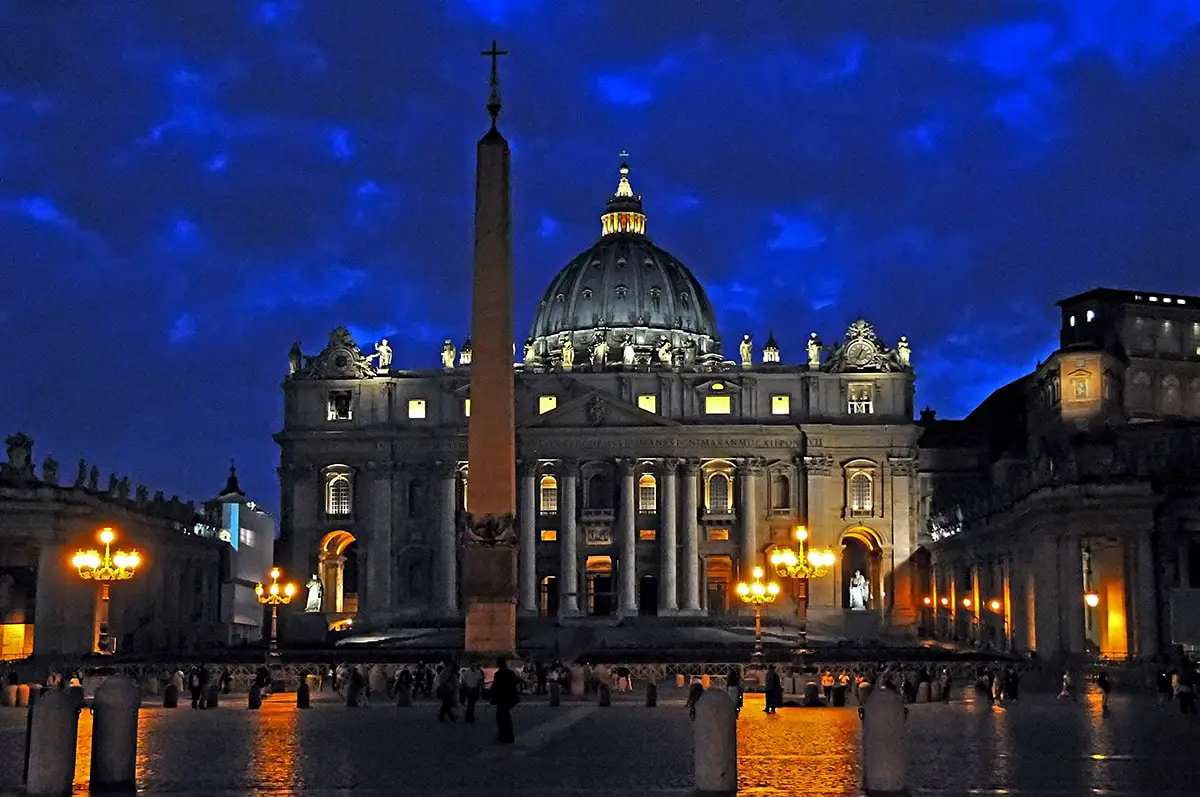
Vatican Library
One of the oldest and most important libraries in the world. Contains thousands of unique and very valuable historical texts that provide new knowledge up to this day. The oldest documents are up to 2000 years old. The total length of the shelves is 42 kilometers. Especially beautiful is the Sistine Hall which is adorned with frescoes.
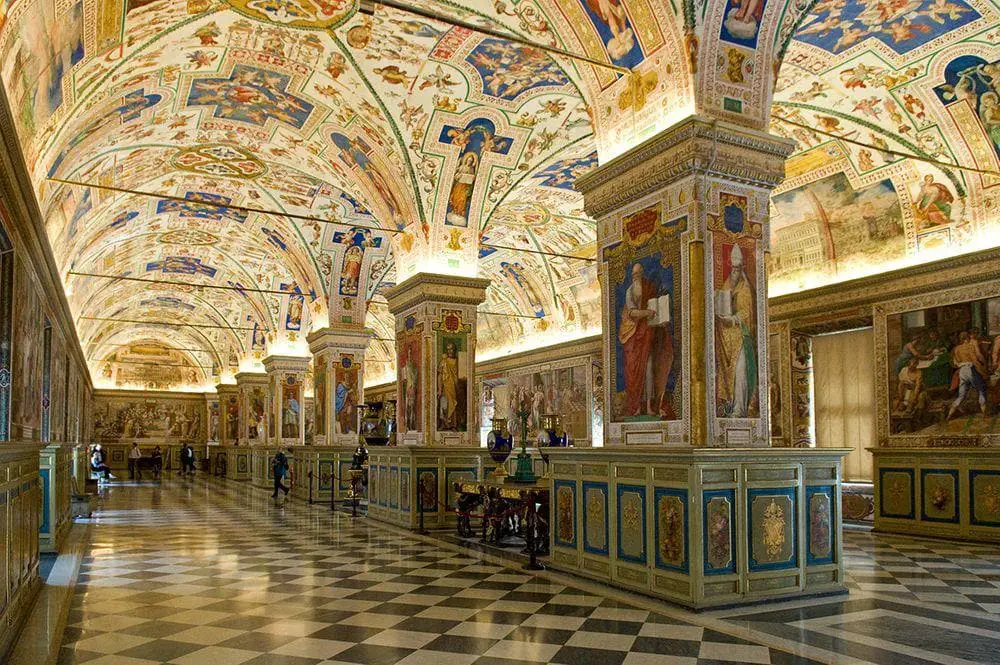
Apostolic Palace (Papal Palace)
The residence of the Pope, connected to the Sistine Chapel and St. Peter’s Basilica. Includes Papal Apartments, the beautiful Raphael Rooms – a suite of reception rooms adorned with frescoes made by Raphael and Borgia Apartments with immense art values. Formally the palace includes numerous buildings: they are reviewed separately here. Includes the enormous collection of Modern Religious Art with artworks of Picasso, Rodin, van Gogh, Chagall, and numerous other famous artists.
Pinacoteca Vaticana
An important art gallery in a beautiful building that was constructed in 1932. Rich art collections include numerous important Renaissance paintings, made also by Raphael, Michelangelo, Leonardo da Vinci, and Giotto.
Sant’Anna dei Palafrenieri
Church in Baroque style, built in 1565 – 1583. One of the early examples of Baroque, one of the first churches with an elliptical plan.
Casina Pio IV
A beautiful patrician villa, now serves as the Pontifical Academy of Sciences. Constructed in 1558 – 1562 in Mannerist style. The white facades of the building are adorned with numerous sculptures.
St Stephen of the Abyssinians
The oldest existing church in the Vatican, originally built in the 5th century. Rebuilt in 1159, with a façade from the early 18th century. Historical Ethiopian and Coptic church. Contains fresco from the 15th century.
Saint John’s Tower
Round fortification tower in the west, part of medieval fortifications, constructed in the 13th century. Since the 1960ies used as apartments.
Vatican Gardens
The western half of the Vatican for the most part consists of beautiful gardens and parks with numerous great examples of park architecture and sculpture. Total area – 23 ha. Redesigned in the 16th century in Renaissance style. The oldest structures here are from the 9th century. Contains 14 permanently enshrined Marian images.
Gregorian Tower
Astronomical observatory in Vatican Museums, a tower that rises above the Gallery of Maps. Constructed in 1578 – 1580 in order to provide the necessary astronomical data for the Gregorian Calendar Reform. It was equipped with the best available astronomy instruments.
San Pellegrino in Vaticano
Ancient oratory. It was built around 800 AD and contains traces of frescoes from the 9th century. The building itself now is much younger, the oldest parts are from the 15th century but the façade is in Neo-Classical style, constructed in 1671.
 Recommended books
Recommended books
Vatican (Classics)
The home of the pope and the seat of the Holy See, the Vatican is a unique entity, a sovereign city-state that shelters some of the world’s most sacred treasures within its hundred and ten acres. The story of this hallowed ground is inextricable from the history of the Catholic Church. But this book reveals that the Vatican is also a tiny living city of many facets, some of them little known. Vatican expert Dominique Chivot follows the journeys of countless pilgrims and cardinals, tracing their footsteps beyond the plazas, basilicas, and museums to unlock the secrets of Vatican City.
The Vatican
A visually stunning and uniquely informative insider’s view to the great treasures and daily life in the Holy City, The Vatican is a unique behind-the-scenes look at the world’s smallest nation and the spiritual center of the Catholic Church.

